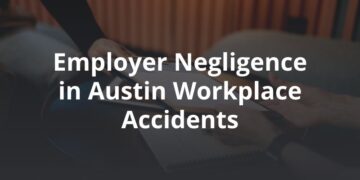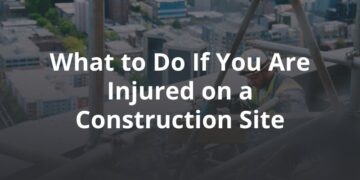One of the most bike-friendly cities in the United States, Austin is home to 19.1 miles of protected bike lanes. While that’s quite a bit more than other cities, it means that in most of Austin’s more than 300 square miles, cars and cyclists are sharing the same roadways with just a painted white line to separate them. Keeping both drivers and riders informed about their responsibilities on the road has always been a priority, but that may be even more important now.
Bike and cycling accessory sales in April 2020 were 75 percent higher than those the year before. This tracks with the pandemic’s trend of an increased focus on fitness and ways to stay engaged at and around one’s home, and this staggering increase in sales means a likely permanent increase in riders on Austin roads.
By law, bicycles on the roadway have the same rights — and responsibilities — as any other motor vehicle. Just like any traffic accident, when a bike crash happens, it’s important to understand your rights and options.
What Should I Do at the Scene of a Bike Accident?
No cyclist wants to think about getting hit by a vehicle that outweighs them by thousands of pounds, but it’s important to be prepared to experience or even just witness an accident. Negative feelings toward cyclists sharing the road are still very real, even in bike-friendly cities, so being able to protect your rights after an accident is almost as important as the steps you take to protect yourself from an accident.
- Call the police. Texas law requires motorists who are involved in an accident to report any accident resulting in injury, death, or more than $1,000 in damages to the Texas Department of Transportation (TxDOT) if it’s not investigated by a law enforcement officer. However, many people don’t know they have this responsibility, and it’s usually best to have the report filed by the officer who arrives on the scene so you can ensure that the right information is collected.
- Get driver and witness information. While hit-and-runs do happen, the majority of drivers involved in a bike accident do the right thing and stick around, as do witnesses. If you are able, collect any information you can from both the driver and witnesses, including vehicle make, model, color, and license plate number. If you saw a car
- leave the scene that you think might have been involved somehow, note that too. Lawyers are terrific investigators, so even partial details can help locate people who were involved when it comes to your case.
- Document the scene. Note your immediate observations of what happened and any elements you think might have contributed to the crash. Did the driver seem to be going really fast? Did you have to swerve away from a driver who was turning in your path? Document whatever you can, and take photos of the scene, any injuries sustained, and damage to your bike and any of the vehicles involved. Smart watches and phones can be great for this — just use your notes feature and record what you saw and experienced while it’s still fresh.
At the scene of an accident, many people start thinking right away about what they could have done differently to stop it. Wondering how you could have prevented a terrible event doesn’t mean you were at all at fault. Even if your actions contributed to the crash in a legal sense — if you were in violation of one of the rules of the road, for example — the law in Texas also says that anyone who is less than 51 percent responsible for an accident may be eligible for financial recovery in a personal injury lawsuit.
What Do I Do After a Bike Accident?
After your accident, the first step should be seeking medical care. Even if you think you’re just a little sore, getting immediate medical attention will benefit you in two ways. Perhaps most important is ruling out severe injuries as soon as possible, such as brain bleeds or spinal injuries. The symptoms of some injuries take days or even weeks to develop, but the sooner you seek care the sooner your doctor can identify what might be obviously wrong and educate you on how to prevent serious complications in the future.
Seeing a doctor also protects you from a legal standpoint. The sooner you document your efforts and costs associated with getting medical attention, the more likely you will be able to recover the damages for your injuries in the event that you win your lawsuit.
Your next step should be calling a personal injury lawyer near you. Calling an attorney who can walk you through understanding your next steps, such as how to access the personal injury protection coverage in your auto insurance policy, is a relatively easy way to deal with the unimaginable stress of having been in such a devastating accident.
Personal injury attorneys deal with this kind of situation every day and can educate you on your options so that you can make the best decisions about what to do. You may not have a case for a personal injury claim, and even if you do, you may decide you don’t want to pursue it. Either way, you’ll gain valuable information from speaking to someone who understands the law relating to your accident.
What’s the Process of Recovering Damages in Bike Accident Claims and Settlements?
If you do have a bike accident claim and decide to file a lawsuit, the percentage of each party’s liability will be determined during settlement or at trial, and this will determine how financially responsible each party is. If you are found to share any of the responsibility for the accident, your percentage of liability will be deducted from your total recovery amount.
Your lawyer will investigate the circumstances of your accident in order to determine — and prove — what caused the driver to act negligently or recklessly. Some of the more common causes of bike accidents are drivers who are:
- Speeding
- Driving while distracted
- Following cyclist too closely
- Changing lanes unsafely
- Turning without looking
- Running a stop sign or red light
- Failing to yield
- Feeling fatigued
- Driving while impaired
While many people do think it’s important for cyclists to ride defensively out of an abundance of caution, it’s not hard to see why drivers are often the responsible party when it comes to crashes involving bikes. All drivers have an obligation to watch out for others on the road, and when they behave in a way that endangers others, victims often have a right to sue to recover damages.
Damages in a personal injury lawsuit may include compensation for cyclists’ medical bills, lost wages, and pain and suffering — along with other economic and noneconomic compensation. In some cases, such as when a driver has a history of causing injury to others or behaves in a particularly egregious way, such as driving drunk, juries may award punitive damages. This is a way that your community makes a statement to others who may be tempted to behave this way.
How Can an Attorney Like Those at FVF Help?
As of this writing, this year Austin has already seen eleven serious injuries reported and three fatalities for cyclists, according to Vision Zero. While even one injury or fatality is too many, those numbers show that the city’s measures to improve safety do seem to be working. Only a decade ago, Austin consistently ranked as one of the state’s worst cities for bicycle crashes and fatalities, with 12,789 recorded bicycle accidents between 2007 and 2012. Fortunately, the number of accidents is going down in Austin, but for the people involved in a bike accident, the consequences can still be life-altering.
When you call FVF, we will provide you with the information you need to make decisions about how to move forward after your bike accident. Contact us today to get started.







